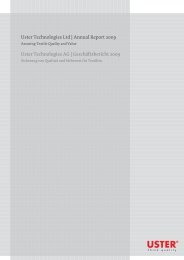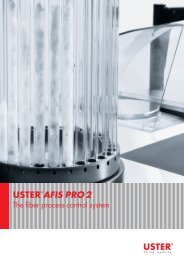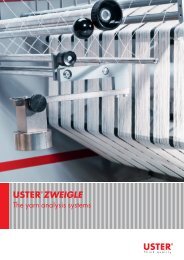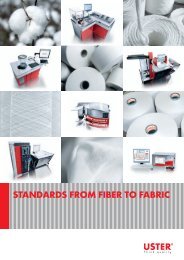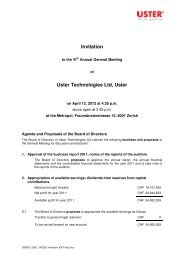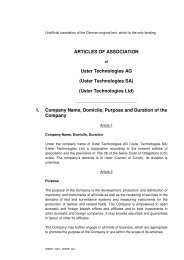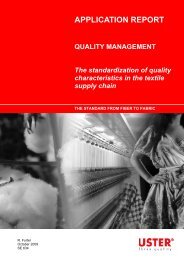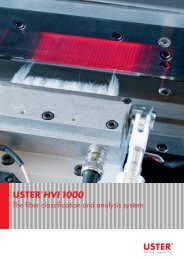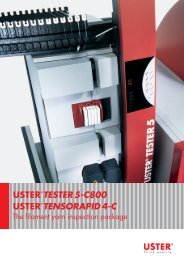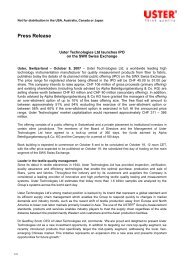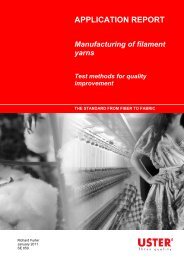Application Handbook_Uster_Statistics - Uster Technologies
Application Handbook_Uster_Statistics - Uster Technologies
Application Handbook_Uster_Statistics - Uster Technologies
- No tags were found...
You also want an ePaper? Increase the reach of your titles
YUMPU automatically turns print PDFs into web optimized ePapers that Google loves.
Characteristics Abbreviation Unit DescriptionB-Force B-Force cN Breaking force = maximum tensile force measured (Fig. 4-6)Tenacity Tenacity cN/tex Breaking force divided by the linear density of the specimenCV Tenacity CV RH % Coefficient of variation of the tenacityElongation Elong. % Breaking elongation = elongation at maximum force (Fig. 4-6)CV Elongation CVε H % Coefficient of variation of the elongationB-Work B-Work cNcm Work to break = work at maximum force (area below theforce/elongation curve drawn to the point of maximum force,(Fig. 4-6)CV Work CV W % Coefficient of variation of the workTable 4-154.5.4 Classification of yarn faults with USTER ® CLASSIMAT QUANTUMThere are basically two types of yarn faults. Firstly, there are the frequent yarn faults, better known asimperfections which are detected with an evenness tester. Secondly, there are rare yarn faults, whichoccur at such irregular intervals that at least 100 km of yarn has to be tested to ensure reliabledetection. For open end yarns a test length of 1000 km is recommended. As a yarn fault classifyinginstallation, the USTER ® CLASSIMAT detects all seldom-occurring yarn faults and classifies theseinto the respective classes of the CLASSIMAT ® system. Using the CLASSIMAT ® matrix, it is possibleto define or control the most suitable yarn clearer settings.CharacteristicsDescriptionFault classificationFault lengths A: shorter than 1 cmB: 1 to 2 cmC: 2 to 4 cmD: 4 to 8 cmE: longer than 8 cmF+H:8 to 32 cmG+I:longer than 32 cmUSTER ® STATISTICS 24 (36)



